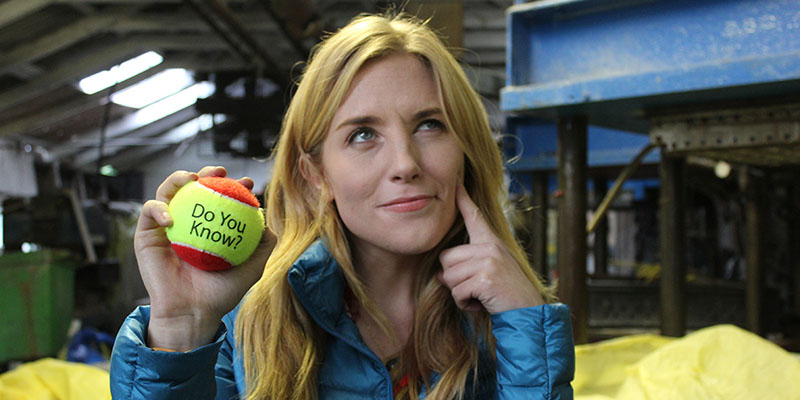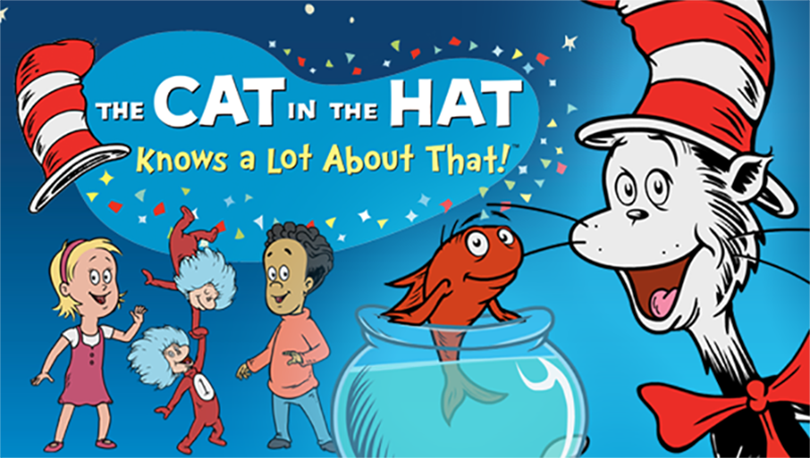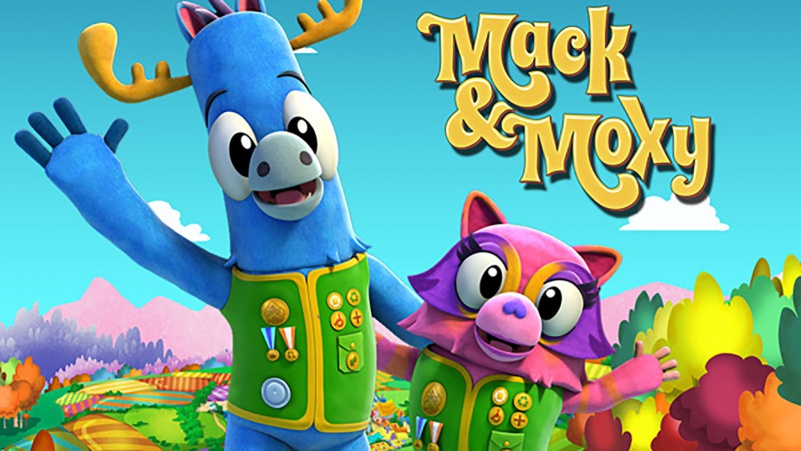
http://kidscreen.com/2016/04/05/the-new-age-of-online-influence/
By Gary Rusak
In the early days of online video, it’s safe to say that networks and brands failed to grasp the full potential of the new technology. Some companies poured resources into high-end professional content that barely made a ripple online, while many IP owners busied themselves with wrong-headed copyright fights against DIY creators. In a flash, digital video, powered by the rise of user-generated content and its most popular platforms like YouTube, Facebook, Instagram, Vine, Snapchat and Twitter, birthed personalities with followings that any broadcaster or brand would envy.
Take, for example, a sarcastic gamer from Sweden named PewDiePie who currently boasts a community of 42.5 million YouTube subscribers and more than 10 billion views, and compare his imprint to fast-food giant McDonald’s. The latter spends hundreds of millions of dollars in advertising and has more than 60 years behind it, yet the globally recognized brand can lay claim to a scant 207,000 YouTube subscribers.
Indeed, PewDiePie serves to represent the fact that digital video platforms have given rise to a cohort of influential online personalities—and it only makes sense that marketers and production companies, both big and small, would try to dip into this creative talent pool. Approaches to the space are varied, as is the matching process used to connect brands with the influencers themselves. For one, the biggest producers, such as Disney and Nickelodeon, are viewing the space as an incubator for new talent, while smaller content developers are looking online as a way to spice up their content with fresh perspectives—not to mention a ready-made audience.
The individual size of an online subscription base across the biggest platforms is perhaps the easiest way to gauge an influencer’s popularity. However, in this era of deep-dive metrics, that measurement is considered important yet superficial. In fact, there are an array of engagement metrics that look beyond reach to measure the back-and-forth interaction between an influencer and his or her community. In other words, the deeper the relationship with the fan base, the more powerful the influencer becomes.
When online video first took off, “It was a whole new medium that was being treated like a stunt. That is changing now,” says Reed Berglund, CEO and founder of Fullbottle, a California-based marketing technology platform. “We want someone who knows how to converse with their fans. This isn’t linear broadcast—there has to be a real relationship there.”
Given the intimacy of the online space, the tools that enable interactions between audiences and creators have placed a heavy premium on being genuine. “Authenticity is key,” says Adam Goldstein, VP of business development at California-based technology and data company ZEFR, adding that the desire to stay authentic has prevented some influencers from capitalizing on their fan bases. “I think people would be shocked at the amount of money some creators have turned down because the brand didn’t speak to the values of their content.”
Another factor in online influencers’ long-term success is the acknowledgment of their own value. “Their audience is what makes them an influencer,” says Goldstein. “So they are very protective of it and know it better than anyone else.”
Disney spent more than US$500 million to purchase multi-channel network (MCN) Maker Studios in 2014, and the House of Mouse is now utilizing its asset, in part, through a new talent and content incubator initiative called Disney XD by Maker.
“We want to empower digital creators,” says Lauren DeVillier, VP of digital media for Disney Channels Worldwide. “We give them funding and infrastructure…it is something we are experimenting with.” Currently, there are 15 premier creators in the program, including big YouTube names like CaptainSparklez, who has 9.1 million subscribers, and EvanTube, the 10-year-old star who has attracted 2.6 million subscribers to date. These creators are now working to develop content for possible distribution across the global boy-skewing Disney XD platform. To protect the authenticity at the core of an influencer’s appeal, DeVillier says that Disney is taking a hands-off approach to content production. “We don’t have a heavy hand with the creative,” she says. “The creators know their audiences better than we do.”
In addition, Disney XD by Maker will accept creative submissions online, where formats ranging from live-action to animation—and everything in between—are fair game. “Anyone can submit an idea,” says DeVillier. “For us, it’s about how to find new ways of storytelling.”
Meanwhile, Viacom-owned Nickelodeon has also recognized the influx of creative talent from the user-generated content community. “Nick was born on a pledge of creator-driven content,” says Nina Hahn, SVP of production and development at Nickelodeon International. “We always said, ‘Let’s find amazing creators with a great story to tell.’”
And Nick has poured a great deal of resources into scouring the digital landscape to try and unearth those unique talents. “The image that pops into my head is when you go hunting and you have someone in front of you that slaps the trees so that the birds fly out,” she says.
Hahn describes the ongoing search as one that’s taking place on a global scale through every major platform, assisted by network initiatives including the Global Animated Shorts Program. She adds that Nick is constantly monitoring all of the major social media outlets and is continuously reaching out to online talent on a grassroots level.
Smaller production companies like UK-based 7 Wonder are also mining the online space for creative inspiration. “When we are looking for new talent, YouTube is the first place we go,” says CEO and co-founder Liza Abbott. 7 Wonder’s forthcoming 25 x 15-minute live-action preschool series Do You Know? stars YouTube personality Maddie Moate. The series will roll out on CBeebies this month with plans for international distribution later this year. Each episode features two separate stories that delve into topics like how a pencil is made and how bicycles work, and the segments are filled with dynamic graphics, go-pro camera shots and other techniques that give the series a digital DIY look and feel.
Joy Rosen, CEO and co-founder of Toronto, Canada-based Portfolio Entertainment, which distributes Do You Know?, points out that Moate’s built-in audience is an asset when shopping the series abroad. “We are hoping those millions of people who have seen her online in whatever market will follow her,” she says. However, Rosen cautions that while digital video platforms are certainly helpful tools for sourcing talent, it will not change the core value of the content production business in the kids TV space. She believes that online influencers will complement the existing production model, and not create a totally new one.
“It is not a slam dunk,” she says. “Maddie is amazing, but a lot of the online talent doesn’t have the professionalism and polish to cross over to a mass audience. They will always be YouTubers.”
While online video is not overthrowing the traditional entertainment business just yet, things are different on the marketing side of the biz.
“We don’t look at digital as a category,” says Chris Erwin, COO at Big Frame, an L.A.-based full-service talent management and influencer marketing firm owned by DreamWorks Animation’s Awesomeness TV. “We look at it as a currency.”
Big Frame evolved from an MCN to a specialist that makes connections between commercial brands and the online influencer community. “We were working on the creator side, advising them on how to grow their channels,” Erwin says. “They didn’t know the first thing about managing a contract or integrating a brand.” The company now seeks brand partnerships for its roster of talent, working with companies to find the best fit within its talent pool, and vice versa. Big Frame boasts a client list of about 200 different influencers—a group that Erwin proudly refers to as the company’s “elite creator set.”
The content that flows from this roster includes concert tours, movies and episodic narratives, while the money comes from deals with a number of well-known brands. For example, Tyler Oakely (eight million YouTube subscribers) has a long-term deal with streaming company Audible, where he integrates the service into his popular videos.
Big Frame has also managed a campaign for Royal Caribbean, wherein two of its stars, Meg DeAngelis (4.6 million YouTube subscribers) and Carey Rad (3.5 million unique YouTube views), were featured in a live-action reality series entitled Royal Crush, which naturally took place on a Royal Caribbean cruise ship. “It was pushing the envelope in terms of working with brands and integrating them in a new way,” says Erwin. Big Frame’s talent stable also has the advantage of leveraging Awesomeness TV’s popular YouTube channel (3.5 million subscribers) as both an incubator and showcase for talent.
Fullbottle, the marketing technology platform, also has a long history of putting brands and influencers together. “We used to Google our fingers to the bone,” says Berglund, describing the early days of trying to match online talent with the right brand. “It was such an arduous process, and a waste of time. It was an industry that needed to be disrupted.”
The company’s solution is a new online platform that went live this month in the US, Latin America and the UK and is based upon what Berglund deems is a self-selection process. “We figured that if we posted projects and got influencers to self-select them, it would really work best,” he says. After using a number of metrics and outreach tools to build a community of approximately a thousand online creators, Fullbottle’s platform allows brands to post briefs detailing what kind of creative talent they are looking for, and what specific audience they are trying to reach. Creators then pitch for the projects that would best fit their audiences and skill sets.
“The products go live and the influencers are notified if they fall within their area of interest—there is a pricing and bidding mechanism, and then we help put the deal together,” says Berglund. The deals, as is standard in the space, are specific to each project and creator, and they can include varying degrees of exclusivity.
In the kids space, Fullbottle has a longstanding relationship with retailer Toys”R”Us, using online personalities such as @taylensmom (129,000 Instagram followers), @foreverandforava (289,000 Instagram followers) and @ginalee (69,000 Instagram followers.) Berglund is confident that the marketplace approach is successful because it leverages two key characteristics of influencers’ power—their authenticity and knowledge of their fan bases.
California-based Tongal is a crowd-sourced content studio that has also had success with its marketplace model. “I knew there was a way to connect creative talent with opportunity,” says James DeJulio, co-founder, president and chief creative officer at Tongal. “We built a platform that would give all the talent out there the opportunity to work with the right partners.”
Tongal has been collaborating with brands since 2011 and has built up a network of 100,000 creatives in 150 different countries. “We send out a creative brief to our community, and our creators will pitch us ideas,” says DeJulio. The client will then vet the submissions and work with Tongal to hammer out a deal that includes compensation, rights-clearing and, potentially, any specific exclusivity clauses. “I remember back in 2009 trying to explain this model to people, and they would just scratch their heads,” says DeJulio. “But now they see the results.”
Among Tongal’s most notable partnerships is its one with toyco Mattel. The relationship has resulted in a crowd-sourced long-form documentary about Thomas the Tank Engine, two short films for the American Girl brand and content for the Monster High IP. Currently, Tongal is making a series of videos for Mattel’s Hot Wheels brand.
“It has been a really positive experience,” says Mattel SVP Sid Mathur. “Tongal allowed us to reach out to a vast and rich global creative community.” The self-selection model also has the advantage of letting creators work with properties and brands for which they already have a deep affinity. And it is precisely this intersection that will lead to the model’s success, according to Mathur. “The real power of the platform is that it gives the creators access to the brands they love,” he says. “In the past, the creative was reliant on longstanding relationships. But this opens it up to a broader field of creative people who potentially really know and understand the brand.”
It’s the job of tech and data firm ZEFR to forge partnerships between marketers and online influencers—but in a different way. The company’s approach is data-driven and relies on a number of proprietary analytics. Rather than honing in on one side of the equation, such as building an elite group of influencers or having a large and diverse roster of creators who self-select projects, ZEFR’s approach is considered both platform and talent agnostic.
“We do it from a technology and data-led standpoint,” Goldstein says. ZEFR’s Influence Management System is a collection of analytics that tracks data across all major social video platforms. “Our sales team will work with brands, and then we will tap into our database to identify the right influencer to approach with a project,” he says. The possible candidates are presented to the client and then ZEFR’s team reaches out to the chosen influencer and executes the deal, handling the communication between the parties throughout the entire process.
“You are dealing with varying levels of professionalism in this space,” Goldstein says, explaining that partnerships with online influencers, including kids under the age of 18, offer their own set of challenges. “We can execute the deal from soup to nuts.” ZEFR has worked with a number of major clients in the kids space, including DreamWorks and Nickelodeon. Currently, the agency is designing an influencer-led program for Hasbro to introduce a new Play-Doh product to the market. “They wanted to engage influencers with their new line,” says Goldstein. “To show them playing with it, talking about it, unboxing it—showing how it works and showing how much fun they are having with it.” The company identified 10 global influencers, who are now on-board for the soon-to-bow multi-week campaign.
Goldstein thinks the use of influencers will only grow as brands come to recognize the muscle of the new masters of online video. “Every kids brand will be using influencers as part of their marketing strategy in the next two years,” he says. “I’m sure of that.”

